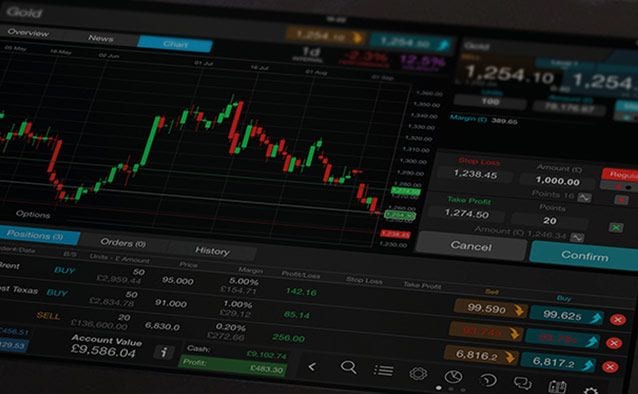
US markets continued their relentless push higher yesterday with the Dow posting its best levels in 10 months while the S&P500 pushed nearer to levels last seen at the beginning of November, as investors take confidence from resilient commodity prices and a weaker US dollar.
This rise in broader commodities and oil prices, with Brent oil hitting its best levels since November last year, has assuaged concerns about increasing pressure on company balance sheets in the commodity space, though it remains to be seen as to whether the rebound has done enough to prevent further loan losses in this sector.
While company earnings have by and large come in as expected or slightly better than expected on the top line, it is hard to escape the feeling that it continues to be a very low bar. This has been a familiar pattern over the last few quarters, as companies always manage to beat their lowered expectations in a manner that can only be compared to a game of football that is goalless and then sees the goals made wider in order that the team can score a goal, the nearer to the final whistle the game gets.
Aside from this the renewed resilience in sentiment along with some significant technical break outs for both crude oil and copper would appear to suggest that the worst of the commodity price would now appear to be in the rear view mirror, along with the recent lows, just over two months ago.
With the FTSE100 breaking above its 200 day MA earlier this month and with the DAX following suit earlier this week, it would appear that a lot of the concerns held at the beginning of the year are starting to abate, as the slightly softer tone from the US Federal Reserve, along with other fiscally loose central banks is helping rub some soothing balm on overall investor sentiment.
The pound has also started to stage a recovery in recent days as traders shrug off some of the more hysterical rhetoric coming from both sides of the “Brexit” debate.
Though there was some disappointment that the UK jobless claims numbers ticked higher in March, wage growth while lower than expected is still running ahead of headline inflation, though the gap is closing a little quicker than is probably comfortable. With core inflation and RPI running at 1.5% there is a risk the Bank of England might be behind the curve, distracted as it is by concerns surrounding the upcoming referendum vote.
Later this morning we’ll get to see how the UK consumer is being affected by all the uncertainty surrounding the political circus being played out in the TV and press every day. March retail sales are expected to show a decline of 0.1%, which is still an improvement on February’s 0.4% decline.
This still feels pessimistic when you consider that, according to Capgemini on-line retailers reported sales have risen 15% in Q1, compared to a year ago, due to increasing use of smart devices, while the Easter break could well boost the numbers as well. March public sector borrowing numbers are also due and expected to come in at £5.4bn
The main event of the day is expected to be the latest ECB rate meeting and press conference. The euro has undergone a somewhat mixed few weeks since the last meeting, gaining ground against the pound but losing against the yen, as a result of the markets interpretation of the comments of ECB press conference Mario Draghi at the last post meeting press conference.
Draghi at the time appeared to suggest that interest rates may not be able to go much lower given concerns about European banks fiscal health in an extended period of negative rates, and high levels of non-performing loans. This was reinforced by subsequent comments from Benoit Coeure when he said rates wouldn’t be pushed into “absurdly” negative territory, though trying to extrapolate an exact number from such an adjective is likely to be tricky.
Today’s meeting is likely to be particularly important, not because of any further policy decision, which is not expected to change, but in light of recent fierce criticism of the ECB, from within German political circles, where fears are rising that the ECB is trying to do too much particularly given that German inflation remains well above 0%.
It will be also interesting to note as to whether Mr Draghi has shifted his view on whether interest rates are able to go even further into negative territory, or elaborates on recent comments he made about “helicopter money”.
EURUSD – currently stuck in a range between the recent highs at 1.1440 and support at 1.1230. Only a move below 1.1030 argues for a move towards 1.0800.
GBPUSD – currently finding dips well supported but needs to get through the 1.4400 neckline resistance level to argue for a move towards the 1.5000 level. Currently has strong support down near the 1.4080 area.
EURGBP – last week’s bearish engulfing pattern suggests we could well see further weakness towards 0.7820 initially. A weekly close below the 200 week MA at 0.7930 has the potential to see further declines towards the 0.7600 area.
USDJPY – having found some support at the 107.60 we are squeezing higher and could head back to the 110.20 area. While below the risk remains for a move closer towards the long term objective at 106.00.
CMC Markets is an execution only service provider. The material (whether or not it states any opinions) is for general information purposes only, and does not take into account your personal circumstances or objectives. Nothing in this material is (or should be considered to be) financial, investment or other advice on which reliance should be placed. No opinion given in the material constitutes a recommendation by CMC Markets or the author that any particular investment, security, transaction or investment strategy is suitable for any specific person.
CMC Markets
Share